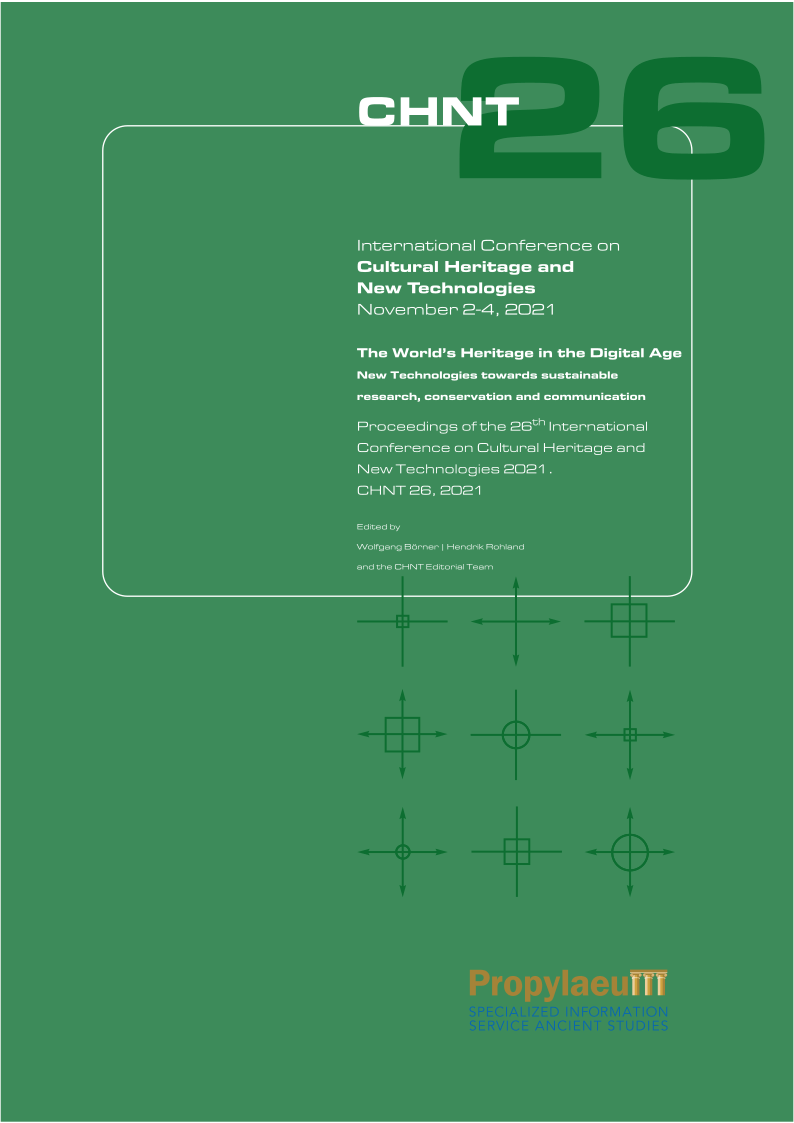Turning a point cloud into a Building Information Model (BIM)
Defining and validating the accuracy requirements for existing buildings
Keywords:
digitalization of existing buildings, point cloud, Building Information Model (BIM), geometric accuracyAbstract
Digitization of existing buildings is one of the main future goals, leading to efficient planning, renovation and maintenance. Among the existing buildings, a significant share is protected as a cultural heritage and their management is supervised because interventions on the protected sites are limited. Building information modeling (BIM) provides the opportunity to integrate accurate as-built information into the digital environment where it can easily be accessed and used. A digital representation of building creation usually starts with the acquisition of spatial data (point cloud), which is then used to create a semantically enriched model with certain geometric accuracy (BIM). In order for the model to serve its purpose, it is important to define how accurate the model should be. Since there are currently insufficient definitions of geometric requirements for specific BIM use cases, the research hypothesis was that the quality of BIM greatly depends on the modeler. The identified issue was approached with a study case. Using the point cloud of the existing building, the BIM was made and validated based on pre-defined accuracy requirements. Different accuracy validation methods were used in the process. Based on the results of the study case, conclusions and recommendations for efficient BIM creation were prepared.
References
Alavi, S. H. and Forcada, N. (2019). ‘BIM LOD for facility management tasks’, Proceedings of the 2019 European Conference on Computing in Construction, 2019. pp. 154–163. DOI: 10.35490/EC3.2019.187
Andriasyan, M., Moyano, J., Nieto-Julián, J. E. and Antón, D. (2020). ‘From point cloud data to Building Information Modelling: An automatic parametric workflow for heritage’. Remote Sensing, 12(7). DOI: 10.3390/rs12071094
Biagini, C., Ottobri, P., Banti, N. and Bongini, A. (2020). ‘Validation processes of H-BIM models: a case study’, IOP Conference Series: Materials Science and Engineering, 949. DOI: 10.1088/1757-899X/949/1/012115
Bonduel, M., Bassier, M., Vergauwen, M., Pauwels, P. and Klein, R. (2017). ‘Scan-to-BIM output validation: To-wards a standardized geometric quality assessment of building information models based on point clouds’. The International Archives of the Photogrammetry, Remote Sensing and Spatial Information Sciences, XLII-2/W8, pp. 45–52. DOI: 10.5194/isprs-archives-XLII-2-W8-45-2017
Computer Integrated Construction Research Program (2019). BIM Project Execution Planning Guide - Version 2.2. The Pennsylvania State University, University Park, PA, USA.
Esfahani, M. E., Rausch, C., Sharif, M. M., Chen, Q., Haas, C. and Adey, B. T. (2021). ‘Quantitative investigation on the accuracy and precision of Scan-to-BIM under different modelling scenarios’. Automation in Construction, 126, 103686. DOI: 10.1016/j.autcon.2021.103686
Hossain, M. A. and Yeoh, J. K. W. (2018). ‘BIM for Existing Buildings: Potential Opportunities and Barriers’. IOP Conference Series: Materials Science and Engineering, 371. DOI: 10.1088/1757-899X/371/1/012051
Kavanagh, J. (2017). BIM: accuracy and Level 2 BIM. Defining accuracy. Available at: https://www.isurv.com/info/390/features/11371/bim_accuracy_and_level_2_bim. (Accessed: 20 August 2021).
Ortega, M. V. and Mort, T. (2017). Scan to BIM—Best Practices for Quality Control. Available at: https://www.autodesk.com/autodesk-university/class/Scan-BIM-Best-Practices-Quality-Control-2017. (Ac-cessed: 20 August 2021).
Scherer, R. J. and Katranuschkov, P. (2018). ‘BIMification: How to create and use BIM for retrofitting’. Advanced Engineering Informatics, 38, pp. 54–66. DOI: 10.1016/j.aei.2018.05.007
Tan, Y., Li, S. and Wang, Q. (2020) ‘Automated geometric quality inspection of prefabricated housing units using BIM and LiDAR’, Remote Sensing, 12(15). DOI: 10.3390/rs12152492
U.S. Institute of Building Documentation (2019). USIBD Level of Accuracy (LOA) Specification Guide. Available at: https://usibd.org/product/level-of-accuracy-loa-specification-version-3-0/. (Accessed: 20 August 2021).
Werbrouck, J., Pauwels, P., Bonduel, M., Beetz, J. and Bekers, W. (2020). ‘Scan-to-graph: Semantic enrichment of existing building geometry’. Automation in Construction, 119. 103286. DOI: 10.1061/9780784479070.002
Downloads
Published
Conference Proceedings Volume
Section
License
Copyright (c) 2025 Katja Žagar, Katja Malovrh, Laurens Oostwegel

This work is licensed under a Creative Commons Attribution-ShareAlike 4.0 International License.
The CHNT older Proceedings are licensed under the creative commons license CC BY-NC-ND 3.0.
From the issue 26 on, they will be licensed under the creative commons license CC-BY-SA 4.0


